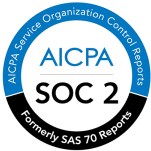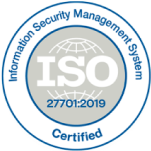Did you know that lacking organizational buy-in and well-defined roles, can turn even the best reports & recommendations from FinOps tools useless? In chapter one of our interview series bringing the FinOps perspectives from across the industry, Ermanno Attardo, CPO & Head of AI at Cypher AI, talks about creating a successful FinOps strategy while moving away from the traditional approach of cost reductions.
Apart from leading the product at Cypher AI, he is also an Ambassador of FinOps Foundations and a FinOps Certified Working Group Lead with 15+ years in tech. He holds several AWS certifications, including DevOps Professional and Solutions Architect. An engineering expert in product and finance, he excels in UX, AI, IoT, and 3D programming. Ermano helps teams multiply output through focused strategies, values diverse perspectives, and fosters critical thinking.
Read the entire interview & know the intricacies of cloud cost management from Ermanno himself.
Q1. What are your suggestions for someone who is beginning their FinOps journey?
Ensure to have full executive support on the work that needs to be done. Then, you should propagate this buy-in to the team of executioners from that stage onwards. To strengthen it further, the certification of FinOps Practitioner from FinOps Foundation would be another pillar.
FinOps is not about saving money. FinOps is about making money.
Q2. Can you highlight key strategies or shifts in mindset that you believe have been instrumental in FinOps evolution?
It's best summarized in the sentence, "FinOps is not about saving money. FinOps is about making money." However, many companies (and vendors) equivocate FinOps despite the warnings. The framework will evolve again to gain further clarity and push in the right direction. The strategy is to consider the owners of the organizations (who may be different people than the executives who run them) and their interests. Any FinOps operation must reflect this consideration.
Q3. What features should one look for while selecting from the available FinOps tools in the market?
Most platforms & tools are great at visualizing and giving recommendations but it cannot be limited to these. It's also about taking action. If you lack organizational buy-in and well-defined roles, even the best reports & recommendations might not be very useful.
Q4. What, in your opinion, is the key to successfully implementing cloud FinOps in a business?
Organizational culture is a distillation of what the leadership considers a priority. If this includes FinOps practice, everyone will get on the same page. Only then you can define a clear RACI (responsible, accountable, consulted, and informed). A group differs from a team because of well-defined roles.
Q5. Are underutilized resources also a challenge for any/your business? How do you tackle it?
If you plan, everything will be under control & underutilized resources will not be a challenge really. You can keep the ‘Drift’ in check with proper planning and operationalization with automation.
Q6. What are the most common things that engineers overlook in the context of cloud cost optimization?
It is the opportunity cost. Sometimes, spending time to fix something that is not worth it will cost more man hours. That same effort can go towards increasing the revenue. Leadership should give engineers clear guidance on what guardrails the decisions should be based on to avoid any wastage of engineers’ man hours.
Q7. Could you suggest low-hanging fruits for cloud cost optimizations and FinOps?
The only suggestion I have is to move away from seeking cost reduction and create new products & revenue streams.
Q8. What are the KPIs you track to keep a check on the Cloud FinOps health?
Create KPIs that make sense for a product and the value that the business achieves. For example, the cost to serve one customer "unit" and revenue per same unit. All KPIs, including the technical ones, should be driven by business value, or you're wasting time.
Q9. What are the new FinOps trends you are most excited to see in 2024?
Sustainability. Aside from the greenwashing fad, there's a legitimate case. We are running out of certain materials, which is limited on Earth. For example, lithium, which is used to make batteries, or gold, which has become more convenient to salvage from old phones than it is to mine. As the FinOps Foundation expands on sustainability, electronics used in cloud hardware will eventually be considered part of a circular economy or sustainability. This is not a green fad but a business consideration. We need more building materials for electronics.
At CloudKeeper, we share knowledge, best practices, and lessons learned to empower our readers to make informed decisions, overcome challenges, and achieve their cloud goals.
Focusing on practical strategies and real-world insights from FinOps practitioners & influencers, our interview series explores the evolving role of FinOps in today's cloud-centric ecosystem and helps our audience navigate changes and adapt to evolving cloud landscapes proactively.








